This is a demo blog for the newly installed version of Movable Type. This is now version 3.121. Yeeehah!
Thanks!!


◇ Where I Spent the Happiest Childhood Days of My Life ◇
This is a demo blog for the newly installed version of Movable Type. This is now version 3.121. Yeeehah!
Thanks!!

This is the CD that we will be featuring this weekend (hopefully) in my iRadio webcast. I purchased this personally from the popular CD store in Ipanema, Rio de Janeiro, and it was near the pub/restaurant (formerly known as Valhala) where the late maestros, Tom Jobim and Vinicius de Moraes, composed the bossa nova standard, “Garota de Ipanema” (“Girl from Ipanema“).
The store is called “Toca de Vinicius“. Not because Vinicius de Moraes started or opened the store, but because it was located in a street named after Vinicius — Rua de Vinicius de Moraes. Literally, it meant, “Place of Vinicius.”
Ze Renato is a prolific performer who first attracted my attention when I saw him perform in one of the numerous shows that paid homage to Tom Jobim.
His voice seemed to yearn for the better days that had passed — like a reminder of the times when people seemed to be simpler, more humble, and gentler.
It is interesting to note that former Pat Metheny Group percussionist Armando Marcal was also the lead percussionist on all tracks. Most of the songs were composed by Ze Keti, and the CD was dedicated to Nara Leao.
We made an impromptu trip to Reno, Nevada, last Saturday – after heavy rains lashed the San Francisco Bay Area on Thursday and Friday – to pump up our sagging adrenaline levels and try our luck in the numerous casinos there.
The trip was smooth as silk, and the weather was simply spectacular. In three (3) hours and approximately 250 miles later, we were already playing our favorite slot machines at Boomtown Casino Resort in Verdi, Nevada (roughly about 12 miles away from downtown Reno).
We moved on to downtown Reno later in the afternoon.
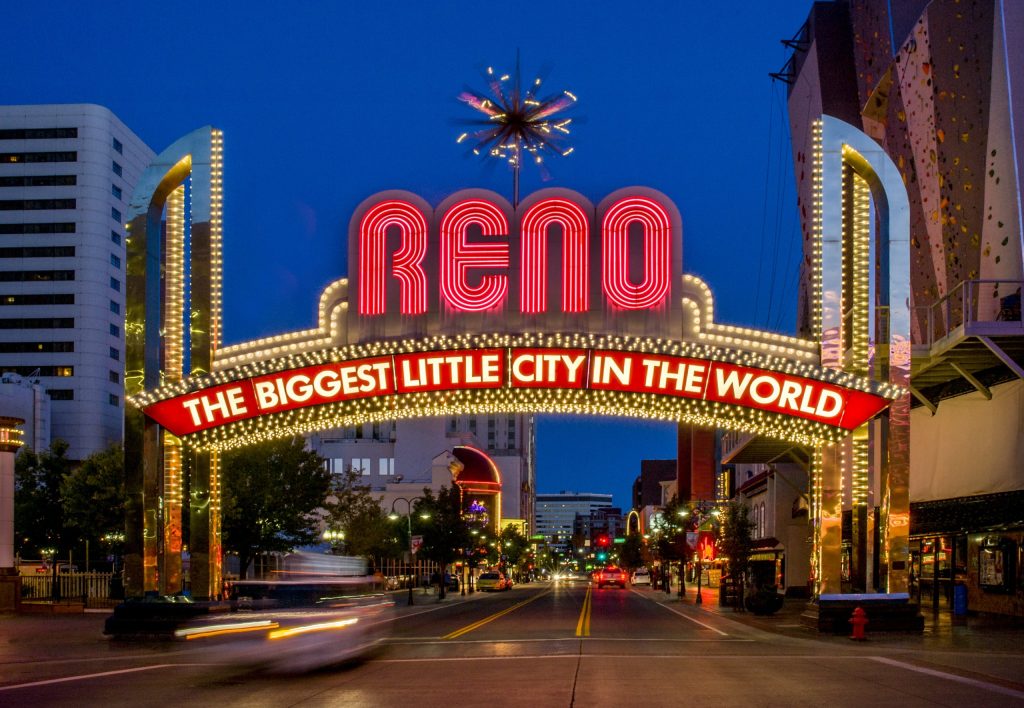
Reno was noticeably not particularly busy on that gorgeous weekend. The Indian reservation casinos must have taken a massive bite out of their lucrative business.
Casino habitués were not flocking to this mini “Sin City” like they used to– especially on a lovely weekend like that one.
For us, it was a welcome relief. Traffic inside the main strip was very light, and going from one place to another was as easy as it could get. Parking was incredibly hassle-free, especially with the use of my ‘temporary’ disabled parking card (side note: in most Indian casinos, these privileged parking spaces always seem to be full), and entering and exiting the casinos was without the usual hustle and bustle.
It was an exceptionally relaxing weekend in an otherwise stressful place.
As an aside, we also stopped by our favorite Filipino eatery in Vallejo, California—Andrea’s, where we picked up all our food for the entire trip. These included “chicken adobo” (a stew of various chicken meats in vinegar, garlic, peppercorns, and soy sauce) and the saucy “beef kaldereta” (spicy beef ribs with vegetables stewed in tomato sauce, pork pâté, and grated Cheddar cheese), served with rice.
For dessert, we had the “taho” (a food-drink made primarily from curdled soybeans) with lots of “arnibal” (syrup made from brown sugar and vanilla) and miniature “sago” (tapioca pearls).
Of course, the package won’t be complete without their irresistible and delightfully crispy “lechon” (roasted pig) with the mildly spicy liver sauce.
While the Philippine peso is falling down like a stack of cards (similar to the ones used in PAGCOR casinos), the PSE Composite Index (Phisix), amazingly – perhaps to show its resiliency – had held its ground and even rebounded on days when the currency was free-falling.
This only demonstrated the fact that money men who were almost exclusively playing the peso-dollar game when stock prices were in the doldrums, were beginning to show their interest to speculate in the stock market once again.
Market makers and foreign investors – prime movers of the PSE – that had long been gone even before the series of parodies that happened in Manila’s top corridors of power unraveled in the 2002, seem to be stepping in once more in the Philippine stock market, after the Gloria administration showed its desire to clean up its act.
Recently, blue chips – which currently are at their dirt-cheap levels almost similar to the turbulent days (post-coup) of the Cory Aquino era – were seen being plucked up by enthusiastic foreign fund managers who are betting that the Philippine economy will fare much better under Gloria Macapagal-Arroyo’s new mandate.
Had the early departure of foreign money (players and investors alike) during the fading months of Erap’s ill-fated administration been a boon and the index had indeed bottomed-out?
Or, these were just the omen of even dire things to come? While the Thailand baht – the currency that triggered the economic crash in Southeast Asia in 1997 – had considerably recovered much of its value, the Philippine peso, on the contrary, is now at levels even much lower when the financial crisis started. Can we learn our lesson from the Thais? Or, is our sociocultural heritage and brand of politics such a volatile mixture that only a cultural revolution can, perhaps, cure? Can the Phisix -like the bamboo – continue to show its resiliency?
Too bad. For a country that contends its population to be the most educated in Asia, how can these things happen quickly and oh, so frequently? Do we love chaos and confusion that much that these are all by
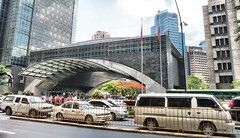
sociopolitical design? Are we emulating the carnival in Rio — but with Manila’s nauseating political overtones?
Questions and still more questions will continue to be poised upon the minds of forward-looking Filipinos who still dream of the good life in their homeland and…not just to be relegated as yet another 7,000 plus island backwater in this part of the globe.
Exactly two weeks ago, we went to the new Apple Store in Pleasanton, CA to take a glimpse of the remarkable G5 iMac which Apple released in mid-September.
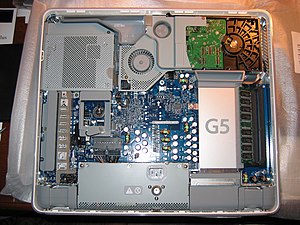
The new store – opened Sept 18 – was inside the Stoneridge Shopping Mall which, in turn, was conveniently situated at the junction of Interstates 580 and 680 — two busy freeways that connect Central California and North Bay commuters to the East Bay portion of Silicon Valley.
From our house, the closest Apple Store prior to this one was either the outlet in Palo Alto (inside the Stanford University campus) or, that spacious store also located inside a huge mall along Stevens Creek Blvd in Santa Clara.
Store employees – clad in black T-shirt with the white Apple logo – eagerly greeted customers and almost automatically, ushered them to the area where the new iMac G5 were showcased.
There were four (4) iMac G5s on hand – two 17″ and two 20″ ones – for customers to try their hands on. I immediately seized the opportunity to demo the 20″ model – with an Apple iSight camera on top of the screen – after a bearded Apple fanatic, was done with his turn — closing all his Final Cut Pro rendezvous — on the dazzling snow-white colored machine.
The first thing I did was examined the physical details of the machine – top, side, front and back. I tilted the screen into varying angles and observed whether the anodized aluminum stand was stable. I was also very impressed with the G5 iMac’s simplicity while not having to skimp on the needs of today’s digitally-addicted computer users. All the ports – digital & analog sound jacks, USB, FireWire, 56K (V.92) modem, 10/100 Ethernet and video out – were neatly arrayed at the back including the power switch.
The front was so pristine – no controls to distract the user’s visual interaction with the stunning display – with the exception of the silver Apple logo imprinted on the white plastic case — to probably serve as a reminder to the users, of the company that brought computing Utopia to them.

The machine’s technical elegance can be seen mostly at the back. Heat dissipation was done via a 1/4″- wide horizontal slit on the machine’s removable back cover. You can feel a very light wisp of hot air gently blowing -courtesy of three (3) microprocessor-controlled fans inside – when you place your hand along this slit.
I’m skeptical whether this method will be ample enough (even without room air-conditioning) when the unit is used in tropical/humid countries like the Philippines. Also, I was not so sure of the machine’s reliability and stability when used as a 24/7, 365 day a year web server. I had long proven the reliability of their G4 (Sawtooth) – as well as the much older G3 iMac (the original, multi-colored model) – because of their bigger cooling fans.
The sound may be a bit on the minus side but the quality was not lame. The two stereo speakers were hidden from view – cleverly crafted at the bottom of the 2″ wide panel, to enable sound to bounce-off from the desk or table where you place the unit.
The new G5 iMac was spiffy enough even with only the base 256 MB of DDR RAM installed. I opened several programs while simultaneously playing two (2) video playbacks via QuickTime and iDVD, and noticed only very minimal video refresh delays even when the other programs were opened and put into action. The machine’s default OS X Panther (10.3.5) seemed to be a good match for the processor’s 64-bit capability.
Lastly, the bundled keyboard and mouse -while not their top-of-the-line-models – complement the overall simplicity of the G5 iMac. As advertised, the keyboard tucked neatly under the stand when you’re done using this nice piece of computer cum art piece. Although, I noticed, that the base of the aluminum stand had already some minor scratches on it, I’m not sure whether they were due to the keyboard’s feet constant rubbing when stowed underneath or for some other reasons.
The price also came as a surprise at a modest $1,299 – this is their cheapest compared to Apple’s previous iMac releases – for the entry level, 1.6 GHz, 17″ screen model with Combo Drive.
Much as I would like to get one that very same day, I was disappointed to come home empty-handed. The Apple G5 iMacs are selling like donuts. There was a long waiting list even if you buy it at a brick and mortar Apple Store!
Ordering it online will set you back for almost a month: time that will be spent in extreme anguish or even mild paranoia.
Meanwhile, Apple fanatics like me will just continue to drool and to hope for the best that, one day, they will be able to snag any one of these new creations that came from the Mecca of Computing in Cupertino.
—notes:
Almost three weeks after we dropped in at this store and after contacting all the Apple Stores in Northern California and signing-on in their waiting lists, this author finally went home with a 1.8 GHz, 17″ screen model of the G5 iMac — from nearby Santa Clara, CA.
—links:
View the author’s iMac G5 slide show: LOW (320 x 240) | HI (640 x 480)
I apologize for not being able to update the site as frequently as possible over the past few weeks. I have an excuse: I was busy rehabilitating my right knee, which underwent arthroscopic surgery on July 7.
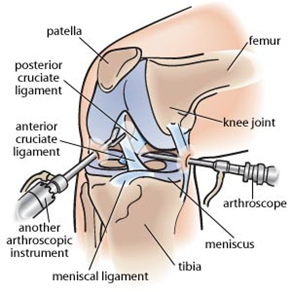
The rehab was not grueling, but it was enough to remove my usual daily activities. The first two weeks were difficult to bear. The muscles and underlying tissues around the operated area were still painful, and moving them laterally sent pain signals up my nervous system.
The exercise set was simple and designed to regain mobility in the affected area as quickly as possible. But the frequency – five times daily – was too time-consuming for me to offer me any other recourse except to deal with them in most of my waking hours.
There were knee-joint presses while lying on my back. Then there were the simple leg raises. Again, while lying on your back, the hip raises require both knees to be flexed.
Another routine involved bending the aching knee as far back as possible while my legs dangled over the bed’s edge.
While seated, I must bend my hips towards my affected knee with the affected leg straight up and the unaffected leg flexed.
A challenging routine involved bending both knees, my back against the wall, and then moving the hip joints up and down. It was painful.
Some exercises required using a rubber tube (for resistance) attached to the ankle of the good leg. The excellent leg propped me up and involved moving the affected leg in all four (4) directions as far as possible. One exercise involved trying to walk as straight as possible on a 3″ wide by 8″ long piece of wood.
And finally, there was the one that required me to move up and down a flight of three-step stairs — backward.
They all stressed movements on the muscles around the affected knee to drain any accumulated fluids in the knee joint areas. When used up after a rigorous exercise, the myofibrils (tiny fibers that comprise the muscle) tend to ‘drink up’ any fluids around them.
Much like the way we crave water when we’re exhausted.
—links:
www.healthatoz.com
www.kaiserpermanente.org
www.arthroscopy.com
The symptom was innocuous: a sudden fever after I ate a bad piece of “bao‘ – “siopao” as we call it back in Manila. My body reacted by trying to eliminate it from my system when I took a brief shower. I was sure that I didn’t get rid of all of it. The fever fluctuated between highs and lows even as I attempted to manage it by taking only Tylenol every four hours.
On the 4th day, I felt significantly better and tried to return to my routine by doing some yard work and light household chores. They weren’t back-breaking work, but it was all the bacteria needed to strike back at me at the end of the day.
The following morning, not only did I have the fever back, but I also had severe pain in the top portion of my right knee. There was no swelling, but merely touching the area elicited very sharp pain, and walking was extremely painful.
After the sixth day, I gave up all hopes of self-medication as the fever shot up to record highs, and walking was now excruciatingly painful. We called the hospital and were immediately scheduled for an appointment for the following day.
At the hospital, blood, urine, and synovial fluid samples were taken, as well as X-rays of my chest and the right knee. The fluid drained from my right knee didn’t look too good (yellow-orange in color), and I was wheeled directly to the ER. There, further blood and synovial fluid samples were taken, and I was put on IV.
An orthopaedic surgeon was brought in and talked to me briefly about my kidney operation of 1981, when my right kidney was removed due to hydronephrosis and pyelonephritis. He suspected that I had a urinary tract infection and that it had caused the fever and the severe pain in my right knee. He tapped my remaining left kidney to elicit pain as well as the area above my bladder. I told him that there was no pain in either place.
The surgeon returned to explain to me that he had to perform an ’emergency’ arthroscopic surgery on my right knee to get rid of all the “bugs” and infection in there. Worse, he will have to open up the knee (arthrotomy) in case the disease is much severe than he thought, to eliminate the possibility of the infection, doing more damage to my still-intact knee.
The knee X-rays revealed no ligament or meniscus damage; however, allowing the infection to remain in the knee for an extended period can cause severe damage to healthy tissues in a relatively short amount of time.
So, that same day, very late at night, I was wheeled into the operating room (OR) for either a quick arthroscopic surgery or a much longer, open-knee surgery. Inside the OR, I was probably awake for only five minutes and quietly prayed for the best.
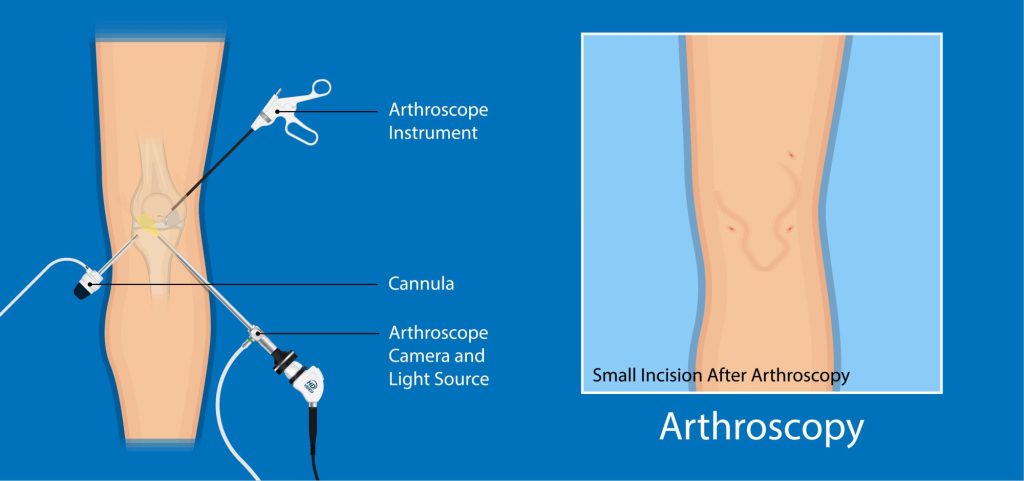
It was way past midnight when I woke up to find myself in the recovery room, with my right foot heavily wrapped in an elastic bandage and a much thicker foam wrap secured by Velcro straps to immobilize the area from the top of my knee down to my ankle. There was also a MediVac (drain) coming out of my right knee via a rubber tube.
After the second day at the hospital, the drain was removed. The following day, all the straps and bandages were removed. I was glad to find only three (3) slits on my knee (two at the bottom and one on top): ONLY arthroscopic surgery was done, and my knee was not opened up. Still, without the pain-killing medication (Vicodin), moving the knee -mainly sideways – elicited severe pain that rang up my entire CNS (central nervous system).
Throughout this ordeal, a wide array of antibiotics was administered on an 8-hour cycle via IV. At the same time, the doctors awaited the results of the blood culture and sensitivity (C/S) test to determine the best antibiotic for the specific bacteria causing the infection. My right knee was still swollen like an overripe papaya.
On the fourth day, the most effective antibiotic had been identified, and the doctors informed me that a PICC line would need to be inserted so that I could administer the antibiotic at home.
On day five, the PICC (Peripherally Inserted Central Catheter) line was inserted following a 45-minute outpatient department (OPD) procedure. It was a very slender piece of plastic tubing inserted through a vein in my right arm (the nurse informed me that this route was shorter) that was initially guided by a thin wire.
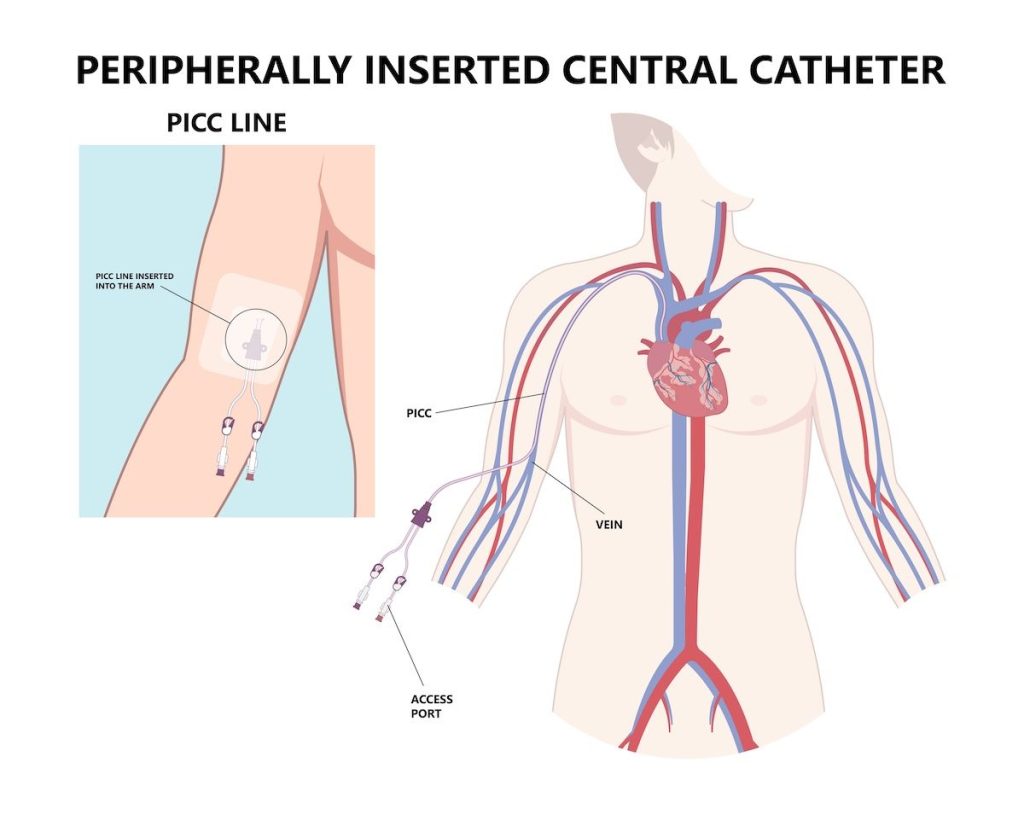
The tube snaked all the way up to a large vein (subclavian vein) situated very near the heart. The main idea was to deliver the antibiotic rapidly to my bloodstream while diluting it at the same time in the area where plenty of blood rushes by, for a more extended period than a drip IV (which is usually effective for only four (4) days).
As a standard procedure, an X-ray was taken to ensure the PICC line was in place; otherwise, the entire procedure would have to be redone. I was also informed that the PICC line will remain in my body for two weeks.
That done, I was out of the hospital after a few more hours of briefing — all related to the arthroscopic surgery on my knee and the PICC line they had embedded in my body, as well as how to administer the drugs at home.
For now, I’m simply looking for better days ahead — to return to my daily routine. But this time around, I will be more thankful for each day that passes.
Simply being healthy is, indeed, a feeling of already being wealthy.
—links:
www.arthroscopy.com
www.thefurrymonkey.co.uk/picc.htm
EPILOGUE:
After the successful surgical procedure, all necessary medications and supplies (required for administering antibiotics at home), as well as durable medical equipment (DME), were delivered by a third-party provider.
He never complains and talks even lesser. He’s industrious to a T and is quite well off in life by ordinary people’s standards. Yet, he’s not the type to wallow in the extemporaneous showmanship of one’s material accomplishments. Forever humble, he goes on through the motions in life as if he is on a divine mission — to an end, only very few people could see.
It is very rare you will encounter such person but I had, again, and I plan to hang around and learn more from him. In this world full of braggadocios and trying-hard hangers-on, it is a like finding a gem that will last you a lifetime.
I had my fair share of friends in the almost five decades of existence. They had come and gone. Some had died along the way and some had simply disappeared in the course of time – the consequences of aging, the sign of the times or, simply, the call of destiny.
True friendships are rare because they are matches made in heaven –a total ‘synching’ of two people’s mindsets and spirits. But to discover them requires a bit of patience. They are not mere acquaintances that we had come to like in a short period of time. They are good starts, though, and could lead to one of those people that we had tried so hard to look for in this complex jungle called life.
Over the course of one’s lifetime, I’m quite sure that one’s list of friends will have gone down from a volume to a single sheet of paper. Keep it and fold it close to your heart.
The memories you had shared with these people are more than enough to keep you aglow and lift your spirits as you amble along in the twilight times of your life.
 After the May festivities, it’s time to put things into their proper perspectives once more. The summer parties are over for the students, and time to troop into the classrooms again. For the fresh grads, it’s time to push those resumes into the fax machines or attach them to e-mails and hope for the best. The Philippine economy may not be rosy, but it can only get better from here (we hope so). The only difference between Manila and the rest of the third-world countries is the former’s penchant for being in this situation more often.
After the May festivities, it’s time to put things into their proper perspectives once more. The summer parties are over for the students, and time to troop into the classrooms again. For the fresh grads, it’s time to push those resumes into the fax machines or attach them to e-mails and hope for the best. The Philippine economy may not be rosy, but it can only get better from here (we hope so). The only difference between Manila and the rest of the third-world countries is the former’s penchant for being in this situation more often.
June will also be remembered as the month in which 1989 the Philippine National Bank’s (PNB) shares were first listed at the then-dual exchanges of Makati and Manila. It was made possible because of the leadership of Edgardo Espiritu — whose moral integrity and high ethical standard should be the example of our current crop of government officials. He quit as the Finance Minister during the Estrada administration and pursued his interest in running private corporations. The reason was obvious.
Over at the PSE, investors are digging their trenches and are preparing to be in for the long haul. The trend had been established, and the administration was offering no clear signs of relief. Short-term rallies will offer a “quick fix” for those who jumped the latest in this pain-bringing, if not perplexing, stock market. But many ‘long-termers’ who were blindsided by the sudden reversal of fortune in the early going of the forgettable Estrada administration – and which had remained in the doldrums during the equally anemic Arroyo transition period/administration – could either bottom-fish or average down at their comfort levels.
The month of June will see a lot of these prominent and honorable businessmen-politicians-stock investors in churches and other religious edifices attending weddings and shelling out huge amounts either out of necessity, the love for social gatherings, conceit, or to perpetuate the Filipinos bent for the ‘padrino system.’
We can only guess what litanies will be heard during the ceremonies. We could also wish that in their prayers, they would be fervently asking for the country’s economic salvation and not simply to recover – and then some – their political investments or, the country may ultimately be the most rotten one among the banana republics.
May the June wedding bells toll on the country’s economic recovery. Hang tough, Philippines!
—link: